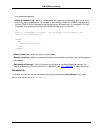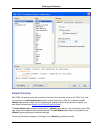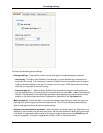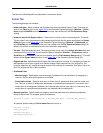
It contains the following general settings:
• End tags settings - These options control how the end tags for the selected tag are formatted:
• Has end tag - This option tells SlickEdit® Core whether or not the specified tag is intended to be
closed with an end tag. This information is used for SlickEdit Core to know when to start or stop cal-
culating information based on the tag. For example, the <div> tag in HTML has a start and end tag,
while the <br> tag does not have an end tag.
• Insert end tags on ‘>’ - When selected, SlickEdit Core automatically inserts the end tag after you
type the closing brace (>) of the start tag. For example, when you type <div>, </div> is automatically
inserted. The placement of the inserted tag depends on other settings you have specified, such as
whether or not the end tag should be on a separate line (specified on the Tag Layout tab).
• Match tag style of - Select this option if you want the selected tag’s settings to match the style of an-
other tag, then pick the tag to use from the drop-down list. This can be a time-saver when adding a
batch of new tags that should all have the same settings.
• Scheme uses case-sensitive tag search - When this option is selected, tags in the Tags column are
displayed in the list exactly as you have typed them, with the case preserved. When you type the tags
in the editor, the case must match exactly or the tag will not be recognized (and the (default) tag set-
tings will be applied). This option is appropriate for XML. HTML is not case-sensitive.
Formatting Settings
286


















